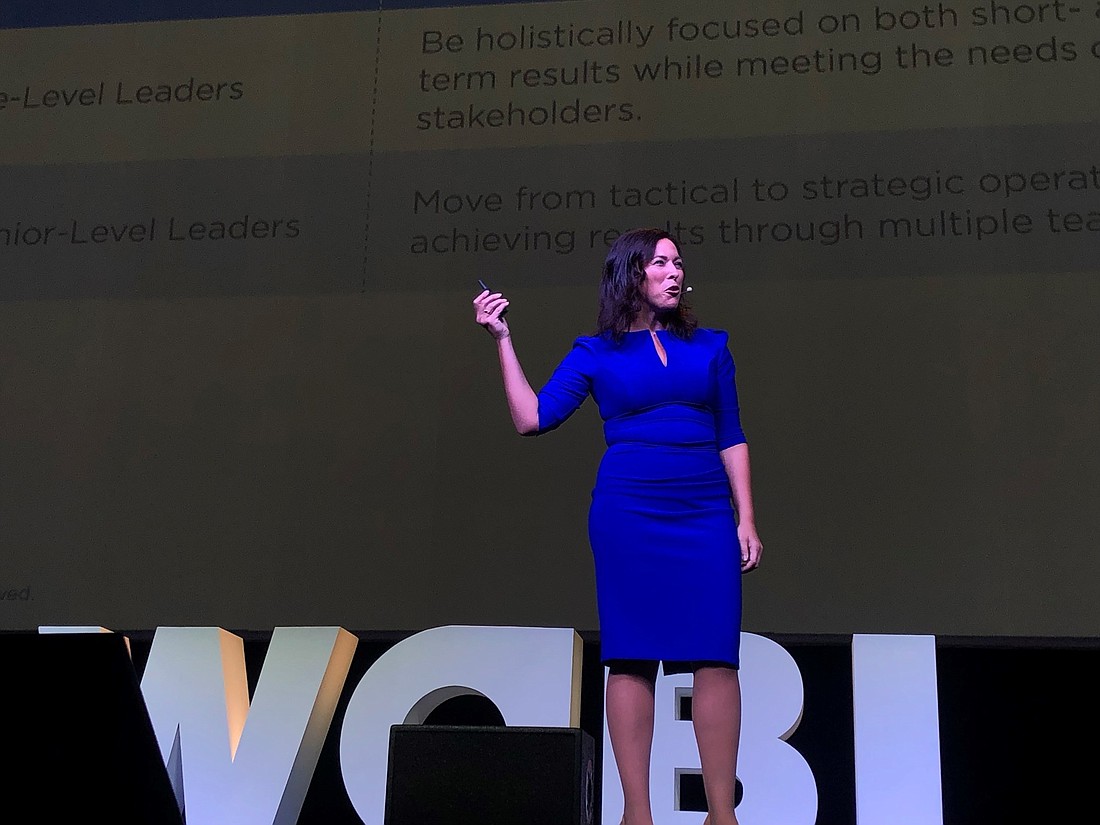- November 23, 2024
-
-
Loading

Loading

It’s a new virtual world that calls for strong, resilient leadership, and Victoria Roos-Olsson has some tips.
Roos-Olsson, an author and senior leadership consultant at FranklinCovey, was a speaker at the recent State of Talent Conference — hosted virtually this year by Sarasota-based CareerSource Suncoast, a nonprofit that provides education and tools to connect employers with skilled talent.
‘You eat to nourish yourself. Think about, ‘How am I giving myself energy?’ If you don’t, you can work short term but not long term.’ — Victoria Roos-Olsson, FranklinCovey
Roos-Olsson, a native Swede, has led learning and development divisions for corporations in Europe and the Middle East. She also co-wrote the book “Everyone Deserves a Great Manager.” Roos-Olsson spoke to State of Talent Conference attendees July 16, as well as with the Business Observer in the days prior about how leaders can get the most out of a difficult period, take care of their personal energy and consciously decide what to put their energy toward. Edited excerpts:
Create connections: During the pandemic, it’s crucial for leaders to over-communicate and connect with team members one-on-one, says Roos-Olsson. She also suggests continuing to gather as a team, which might mean hosting virtual after-work events. “One key thing that really creates energy is connection,” she says. “As a leader, now that people cannot hang out by the water cooler or coffee machine, what are you doing to create those moments? That’s also where a lot of ideas happen. You need to find a moment to do that virtually.”
Be flexible: Roos-Olsson encourages leaders to be flexible with employees working remotely. Because of children and other home responsibilities, different working time frames — not necessarily 9 to 5 — might be more convenient and effective for employees. “As leaders, we want to be really thinking about how do we set that up so it becomes a win-win,” she says.
Reframe the situation: Roos-Olsson gets strength from reading historical novels about the hardships people in previous generations experienced and how they coped. During the pandemic, she and her family have had their own difficulties — she and her daughters are in Atlanta while her husband has been stuck in Sweden since the end of February. Roos-Olsson has been trying to put it into perspective. “How can I reframe this situation?” she says. “Could this be an opportunity for me to grow?” Leaders can ask themselves similar questions: “Are there any positive outcomes of this? Are there any things you can learn from this perspective?”
Structure time: The pandemic has caused leaders’ energy levels to fluctuate. Some times they might be energetic, Roos-Olsson says, while other times leaders might be overwhelmed with tiredness. “There are so many aspects of this change that are emotionally draining,” she says. She suggests setting specific time aside for different roles, from work to family time. “Be better with your weekly planning. Structure that time.”
Build energy: It’s important for leaders to take care of their energy, especially during the coronavirus. “You eat to nourish yourself,” says Roos-Olsson. “Think about, ‘How am I giving myself energy?’ If you don’t, you can work short term but not long term.” At FranklinCovey, she says they often discuss the five drivers to generate energy: eating to nourish, getting more movement throughout the day, getting enough sleep, relaxing to clean the mind and connecting with people. To build energy, leaders should think about how they can be better at each driver.
Represent roles: One exercise Roos-Olsson uses is deciding on her most important roles. A lot of people end up having too many roles, so she limits herself to seven work and personal roles, from facilitator and author to mother and wife. “In each role, I’m linking back to my mission statement,” she says. “What do I want to be? How am I going to contribute to that this year? What does that mean for me this week? Are all of my roles represented in what I do? For each of the roles, I’ll specifically give myself goals.”
Realize influence: A key strategy for leaders to maintain a positive mainframe is to focus on their circle of influence, a concept from Stephen Covey’s book “The 7 Habits of Highly Effective People.” To put it into practice, leaders should write down everything that concerns them, from job matters to personal issues. Then leaders should consider what items from the list they can influence. “Look into that circle of influence,” says Roos-Olsson. “That’s where you want to spend your time.” Leaders can also harness their circle of influence to build a better future. “Visualize the future,” she says. “What would you like that future to be like? See what you can do within your circle of influence to move yourself there.”